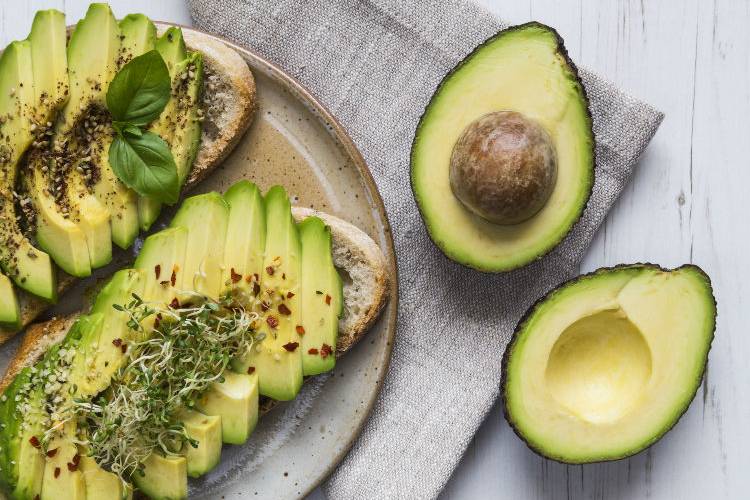Avocado: for health, cooking and cosmetics
Avocado has gained a bad reputation due to its high caloric intake. However, it contains monounsaturated fats, known as 'good fats', essential to give energy to the body. Its benefits are innumerable and its application in the kitchen (and out of it) are very varied.
fresh food
Share

Until a little more than a decade ago, the consumption of avocados in Spain was not habitual. The avocado originates in tropical and subtropical Central American areas, so finding it was not as easy as it is now. But for some time now, avocado is no longer considered an exotic fruit, since its cultivation has spread throughout this country, especially in Andalusia, so it is not so strange to include it in our shopping list.
Although its consumption has increased, the fats that it contains are the cause of its current bad reputation. However, not all fats are the same. Our body needs nutrients to work properly: proteins, carbohydrates and lipids or fats. The most harmful to our health are hydrogenated vegetable fats, present, above all, in processed cakes and pastries, and in pre-cooked meals. In contrast, polyunsaturated fats, present in oily fish such as salmon, and monounsaturated fats, which are of vegetable origin, are healthy fats. And the fat of the avocado belongs to the latter.
Avocado has many properties that make its consumption highly recommended. It is rich in fibre, has an elevated level of potassium (more than a banana), provides magnesium and the doses of vitamins B and E it contains make it a potent antioxidant.
It is a highly recommended fruit for athletes, since it provides a lot of energy, favours the repair of muscle mass and reduces inflammation of the joints. Its consumption improves cholesterol levels and is recommended for arthritis. In addition, it is usually very present in the diets of pregnant women, since it is a food rich in folic acid, which is responsible for preventing malformations in the foetus during gestation.

What dishes can I add avocado to?
To know if an avocado is ready to eat, we must look at the stem. If you can easily remove it with your finger and in its place a brown colour is observed, it is just right. If the avocado is green, we can accelerate its ripening by wrapping it in newsprint next to an apple. In 2 or 3 days, it will be ready to eat.
Avocado can be prepared in many different ways. The simplest thing is to add it to salads or tuna or salmon tart. You can also spread on toast and add flax seeds. In fact, European sailors used it in antiquity as a substitute for butter. It can be used to make cold creams and, of course, to make guacamole.
GUACAMOLE RECIPE
Ingredients: 2 ripe avocados, 1 small tomato, 1/2 onion, 1 jalapeno pepper, fresh coriander leaves, juice of half a lime and salt.
Method: Chop the onion and the chili as finely as possible. Cut the tomato into small cubes and the avocados in half (cutting down to the stone, and turning each part, separating the two halves). Remove all the pulp with a spoon and put in a bowl with the onion, tomato and chili. Chop the coriander leaves and add. Add the lime juice and salt. Crush with a fork until all ingredients are mixed and a homogeneous sauce is obtained
A beauty aid
In addition to its culinary use, avocado oil is widely used in cosmetics and with it we can make our own homemade face masks for the hair or skin.
• Hair mask: mix a ripe avocado with honey and olive oil and apply it to the scalp. Let it act about 20 minutes before rinsing, to get softer hair.
• Anti-aging mask: beat the symptoms of facial aging by mixing the pulp of an avocado with jojoba oil. Apply and let it act for 15 minutes. Rinse with lukewarm water.
• Anti-odour: Avocado helps to decongest the blood capillaries, so it is a good remedy to combat dark circles. Mix the pulp with three tablespoons of oats, apply over the area and let it act for 30 minutes.
• Homemade scrub: exfoliate your skin at least once a week with a home-made scrub. Mix the avocado flesh with two tablespoons of oatmeal, one tablespoon of lemon juice and one tablespoon of salt and apply it to the face to remove impurities.
• Cleansing Milk: For a more moisturised and cleaner skin, mix a quarter of an avocado and a natural yogurt. After use, the skin stays cleaner and moisturised.

Salmon, a very nutritious and tasty food, essential to our diet
Read more
Salmon, a very nutritious and tasty food, essential to our diet






